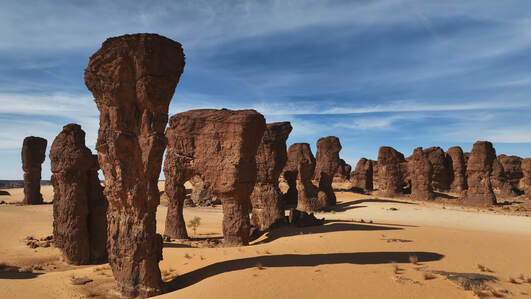Written by John Edward Betancourt Still from Episode 103 of ‘Planet Earth III’ – ‘Deserts and Grasslands’ Courtesy of BBC America. Still from Episode 103 of ‘Planet Earth III’ – ‘Deserts and Grasslands’ Courtesy of BBC America.
Caution: This article contains spoilers for Episode Three of ‘Planet Earth III’. To revisit the previous episode, click here.
Thus far, our comprehensive trip around the globe, via the BBC America series, Planet Earth III, has focused primarily on the coasts and our oceans, and rightfully so. For this is to be a powerful learning experience, and there is so much for us to learn about our oceans and the miles upon miles of coasts that make up the many continents that we live upon. But while it has been extremely enjoyable to explore the coasts and the depths of the oceans that sustain life, there is still so much for us to see and so much for us to learn about the tiny blue ball we call home. Which is why, this week’s episode made a point to shift gears and take us inland. Deep inland in fact, so we could see what the ‘Deserts and Grasslands’ of the world look like, and well… one fact we learned early on that should have come as no surprise, was that the deserts of the world… are a harsh, harsh environment. To the point where the sun bakes everything it touches, and where winds ravage so much land, that they make their own haunted symphony. One born of wind simply whipping across the peaks of dunes, reminding us why this isn’t a place that many people live, well that… and the giant stand storms that are generated out there often. But despite the inhospitable nature of life in the desert, believe it or not… life does persist… and struggles greatly to say the least. As evidenced by the struggles we were privy to. Since we were able to bear witness to a how the ostrich works to keep itself and its newborn babies alive in the midst of the heat generated in the desert. For the parents must protect their little ones from the heat, and so they sit watch and wait for as many of their eggs to hatch as possible, before moving on and finding proper shelter, so they can actually raise their young. Leaving some of their young behind if necessary. For survival of the fittest is the name of the game in the deserts, to the point where even mothers must fight to find water, as we saw take place with a group of baboons that were traversing the dust in the hopes of finding shelter and food, and more of that water. Which… eventually finds its way to the desert. For the rains eventually fall and create something of a grassland in some parts of the desert. Giving rise to new struggles. Wherein predators and prey battle it out to survive and see another day, and where new threats are posed. For eventually, the rains stop, and the grasslands become nothing short of a powder keg. Where a single spark will threaten lives and sometimes… it is humanity that causes that particular spark. Giving rise to the reality that we are as much responsible for the struggles of wildlife as much as the chaotic nature of mother nature is, and that was important to point out here… because some of what happens out there, is quite preventable. For if we did a better job with farming, we wouldn’t need to set fire to ecosystems. Not to mention, if we just… co-existed with nature, it would thrive, even in these difficult places. As evidenced by what happened when we stopped hunting elephants in some deserts and let nature just be. All of which made it apparent, that we have a great influence on nature that we’re not aware of, and we should step back. Because as we saw here, nature can handle its own, and it knows how to survive even in the toughest of environments. Which means we should instead, be doing everything within our power to ensure it has a climate that is stable and plenty of space to live as it has for generations. Which made this a poignant and important episode, one that offered up some fascinating lessons about a corner of the world that we don’t think about all that often. Until next time. Watch ‘Planet Earth III’
0 Comments
Leave a Reply. |
Archives
April 2025
|
|
© 2012-2025, Nerds That Geek LLC.
All Rights Reserved. |
uWeb Hosting by FatCow

 RSS Feed
RSS Feed